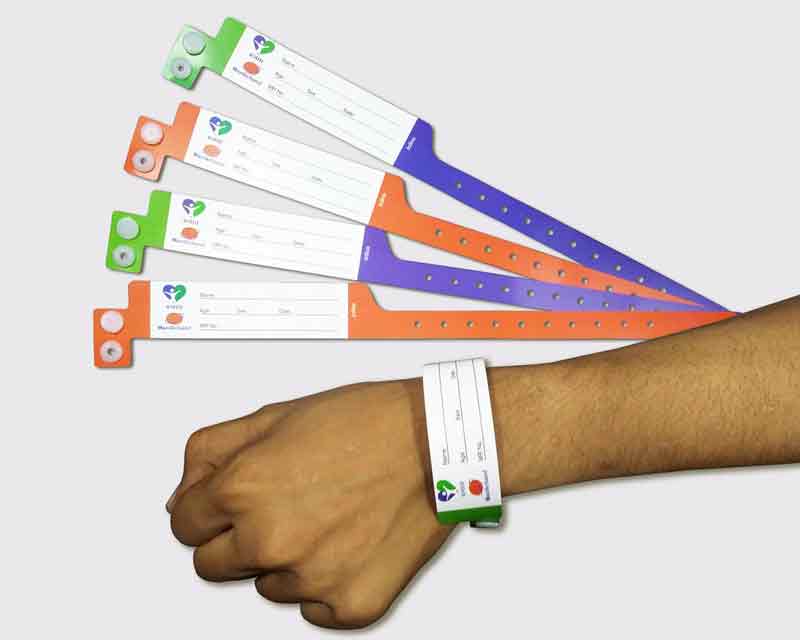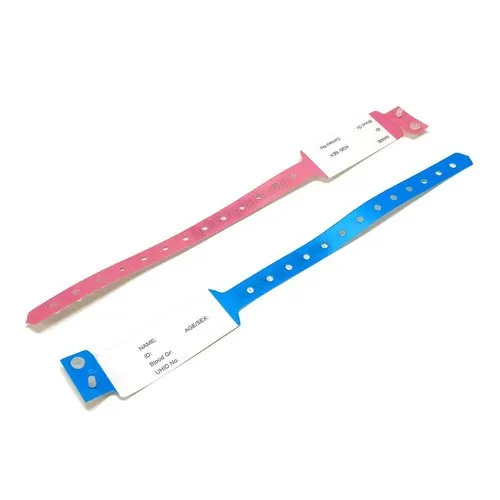The Increasing Need for Advanced Patient Identification Bands in Modern Healthcare Facilities
The Increasing Need for Advanced Patient Identification Bands in Modern Healthcare Facilities
Blog Article
Discovering the Different Types of Patient Identification Band Made Use Of in Clinical Facilities
In the complex world of medical care, the crucial function of Patient Identification bands usually goes unnoticed. These bands, differing from easy paper wristbands to innovative RFID bands, develop the foundation of Patient security protocols, making certain precision in Patient Identification.
Comprehending the Value of Patient Identification Bands
While they might appear like simple accessories, Patient Identification bands play a vital duty in medical centers. These bands serve as a crucial device for verifying Patient identification, stopping medical errors connected to misidentification. Patient Identification bands likewise help in simplifying administrative jobs, ensuring exact record-keeping and invoicing.
Traditional Paper Wristbands: Their Usage and Limitations
Typical paper wristbands have actually been a staple in Patient Identification throughout different medical facilities. While their usage is extensive, they nurture certain constraints that might impact their performance in Patient monitoring. This area will focus on the range of their application and the integral downsides connected with their usage.
Paper Wristbands: Usage Extent
In the realm of Patient Identification, paper wristbands have actually long held a critical function. These bands are normally made use of in outpatient settings, where the Patient's remain is short-lived. Regardless of advancements in innovation, the humble paper wristband continues to be a dependable and economical solution for Patient Identification in different healthcare circumstances.
Limitations of Paper Wristbands
Despite their extensive use, paper wristbands are not without their downsides. Their physical durability is among the considerable constraints. Direct exposure to water, sweat, or misuse can provide them unreadable or perhaps cause them to degenerate. In addition, paper wristbands commonly do not have the technical capacities of more contemporary options, such as barcoding or RFID chips, limiting their performance to merely presenting composed details. The lack of ability to update or change the information on the wristband is an additional imperfection. If the info is handwritten, readability can be endangered, leading to potential misidentification. Ultimately, paper wristbands can trigger discomfort or skin inflammation to some patients, especially when worn for prolonged durations.
Barcoded Wristbands: Innovations in Patient Identification
While Patient Identification has long been an important element of healthcare, the advent of barcoded wristbands signifies a significant leap ahead. These bands utilize the simplicity of barcoding modern technology, permitting for Patient info to be quickly scanned and accessed. They enhance the speed and precision of Patient Identification, lowering the danger of medical errors related to misidentification.
Radio Regularity Identification (RFID) Bands: an Action In The Direction Of Futuristic Healthcare
The advancement of Patient Identification bands has actually produced the development of Superhigh frequency Identification (RFID) Bands (patient identification band). These innovative gadgets present crucial advantages for medical care centers, supplying a much more reliable and highly progressed methods of Patient Identification. The implementation of RFID in healthcare is a significant action towards an extra futuristic approach to Patient monitoring and security
Understanding RFID Bands

RFID Bands: Trick Advantages
Primarily, these bands improve Patient safety and security by providing exact, instant Identification, therefore lowering clinical errors. RFID bands can keep a substantial amount of Patient data, including medical history and allergies, enabling customized care. Overall, RFID bands stand for a significant advancement in Patient Identification technology, profiting both people and health care service providers.
Carrying Out RFID in Medical Care
These bands give a seamless way to track and recognize patients, ensuring their safety and security and enhancing performance in therapy procedures. RFID bands lower medical errors by supplying exact Patient Identification, which is essential in preventing misdiagnosis or incorrect medication administration. Hence, index the implementation of RFID bands is a considerable step towards boosting Patient safety and security and health care shipment.

Color-Coded Wristbands: Helping in Quick and Accurate Diagnosis
In the bustling environment of a clinical facility, color-coded wristbands have actually emerged as important tools for swift and specific Identification of a person's clinical problem. These wristbands, worn by people, lug details shades that correspond to various clinical problems or statuses. This system is developed to use immediate aesthetic cues to health care providers, boosting Patient safety and security and care high quality.
Methods for Effective Execution and Management of Patient ID Bands
Achieving ideal use Patient Identification bands requires a well-structured method for their implementation and management. The initial step entails training all wellness employees on the importance of properly applying and checking out these bands. Healthcare facilities need to standardize the use of ID bands throughout all departments, guaranteeing harmony and minimizing disparities. Routine audits must be carried out to confirm adherence to policies and click resources to correct any type of inconsistencies. Patient education is additionally important; clients must recognize the function of the bands and the requirement for their constant wear. patient identification band. It's crucial to have a back-up strategy in place, such as barcode scanning or biometrics, to ensure that Patient Identification is never compromised.
Verdict
Patient Identification bands helpful site are crucial in clinical centers to ensure safety and accuracy. Reliable implementation and administration of these bands can significantly decrease medical errors, improve performance, and improve general Patient care.
These bands, varying from straightforward paper wristbands to advanced RFID bands, create the backbone of Patient safety protocols, ensuring accuracy in Patient Identification.The advancement of Patient Identification bands has brought regarding the appearance of Radio Regularity Identification (RFID) Bands. Generally, RFID bands represent a considerable innovation in Patient Identification innovation, profiting both people and health care companies.
RFID bands decrease clinical mistakes by supplying exact Patient Identification, which is vital in avoiding misdiagnosis or wrong medicine management. Patient education and learning is also critical; people have to comprehend the objective of the bands and the demand for their constant wear.
Report this page